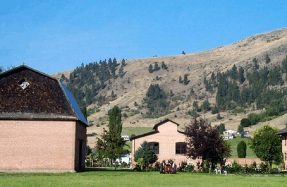Recognizing and Including Indigenous Cultural Heritage in BC

This is an edited excerpt from a policy paper prepared by Karen Aird, Gretchen Fox and Angie Bain on behalf of First Peoples’ Cultural Council for release in August of 2019. The complete version can be found at www.fpcc.ca
A footprint of the past
Cultural heritage is more than just celebrating and protecting built heritage. It is all the aspects of a community’s past and present that it considers valuable and desires to share with future generations.
Indigenous cultural heritage (ICH) is a footprint of the past, reminding us who we are, what we have done and how we might improve upon our work. A critical part of rebuilding Indigenous cultures and nations requires that Indigenous Peoples reclaim their voices, choose how the past is documented, described, understood, managed, and shared.
“Indigenous cultural heritage (ICH) is a footprint of the past, reminding us who we are, what we have done and how we might improve upon our work.”
Indigenous cultural heritage matters. It is quite literally anchored to the land and embedded in language. It creates identity and social cohesion, and it supports community and individual health and well-being. Indigenous identities and social structures — and consequently health and well-being — are intricately tied to laws, harvesting practices, stories, songs, ceremonies and memories associated with specific places on the land. When those connections are strained or broken, Indigenous Peoples are likely to experience poor physical, mental and emotional health. In short, Indigenous health and well-being is predicated on continued access to, and control over, those elements of tangible and living heritage that support and maintain strong connections between people and the land. It is through these reciprocal caring relationships between people and the land that good health is nurtured and heritage is safeguarded.1

Maintaining cultural heritage goes hand in hand with securing Indigenous Peoples’ abilities to continue to engage in activities that reproduce and affirm their cultural identities, social groups, and specialized practices. Today, a number of circumstances are challenging the relationships between heritage and health: at the local level, land-based cultural teachings and practices (including local food-ways) can be hindered by land access issues, as well as language loss, which is intricately tied to heritage knowledge and meanings. At the national level, Indigenous Peoples in Canada are not yet legally recognized as owners or decision-makers of their own cultural heritage, resulting in uncertainty for the future of that heritage and their health and well-being. On the global scale, climate change is altering the ways that people are able to protect and engage with heritage and heritage-based activities and teach
You’re reading a preview, subscribe to read more.
Start your free 30 days

